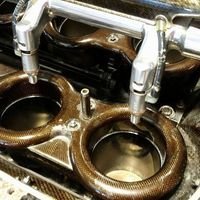Aero Aids, Do They Work? In Particular Gt Wings? Now You Know!
Announcements
-
Similar Content
-
Latest Posts
-
By MidnightR32 · Posted
I've uploaded logs / the current map to Gdrive if anyone has any ideas. https://drive.google.com/drive/folders/1FPnr22Z-EilG7tYdHSi0Qb07P2jfFLKV?usp=sharing -
By MidnightR32 · Posted
I'm running a Haltech Platinum Pro with the stock map for the RB20DET + tweaks for my build. When I started it this morning, the IAT was at 32F/0C (Outside temp was ~42F) and the AFRs went off the scale for my AEM gauge. I let it run for ~30 seconds then turned it off. I then did a smoke test, by hooking into a vacuum line directly behind the throttle body, and confirmed there was no leaks ( i let the smoke tester run for ~5 minutes / confirmed it was generating smoke before hand ). I then started the car again, after fixing a power steering leak.... and it seemed to be happy for ~30 seconds (was at ~11/12), but then seemingly shot back up to ~18 again. I then let the car run for a few minutes, thinking this was just cold start related, but the AFRs never came back down. I didn't let the car fully warm up, so maybe this makes sense, but I'm not sure what to do? The AFRs, when I last ran it, were normal, but because of personal reasons I haven't been able to break in the car. It was rebuilt last year. Engine / Mod list: Supertec pistons Spool rods Kelford 270 cams and Springs Stock crank Deatschwerks 900cc injectors Walbro 255 (Wired directly to the battery relocated in the trunk) NKG Audi R8 Coil packs + Conversion Harnesses from Wiring Specialties Holset HY35 turbo Haltech Platinum Pro ECU Haltech boost controller (wired in for high boost RB25 Neo transmission + needed bits for the speedo to work



Recommended Posts
Create an account or sign in to comment
You need to be a member in order to leave a comment
Create an account
Sign up for a new account in our community. It's easy!
Register a new accountSign in
Already have an account? Sign in here.
Sign In Now